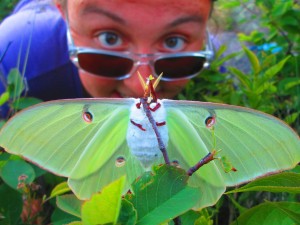The Art of Observation

Originally appears in the Summer 2014 issue
OBSERVATION IS VITAL to forming an understanding and connection to the natural world around us. We make observations from the moment we are born until we take our last breath. It takes time and practice for people to develop the skills necessary to make scientific
observations, which is why it is important to start children observing at a young age and continually refine students’ skills throughout their science education experience. When teaching students to make scientific observations, it is important to know two things: our observations are a product of our personal experience/prior knowledge of the subject, and a poor understanding of science can directly influence our
observation skills.
What is scientific observation?
It is important to distinguish between everyday observation and scientific observation. Everyday observations are made from practical and intuitive experiences and are made without a strong conceptual framework or knowledge base in which to ground them. For example, a student may see a large log perched on a rock above the river and be able to describe what the log looks like in the river—how high it is off the water, the color and shape of the log, etc.—but be unable to make observations about the clues as to how it got there. Everyday observations are typically brief, unfocused and lack a systematic approach.
Scientific observation on the other hand, “includes noticing, theoretical expectations, observational records and productive dispositions.” Let’s return to the log in the river example. A scientific observation of the log would include measurements of the log and the distance the log is from the water’s surface; observations that help determine how long the log has been sitting on the rock; and even detailed observations
about the environment around the log, which would allow the students to construct meaning about why the log is perched on the rock.
Everyday observation is not less valuable than scientific observation; it is better to think of observations on the scale of a continuum. Everyday observations help students form basic frameworks that help them to start to see patterns in the world around them. Everyday observations can spark curiosity in students which motivates them to make scientific observations. As teachers, we help students become
more aware of the types of observations that they are making to foster critical thinking about the information they are gathering. As students develop scientific observation skills they have better tools to construct knowledge about the natural world.
To view the photo-rich magazine version, click here.
If you are not already a subscriber, please subscribe to read the full article
Shannon Walz is the Education Director at the Wolf Ridge Environmental Learning Center in Finland, Minnesota.
Leave a Reply
You must be logged in to post a comment.










